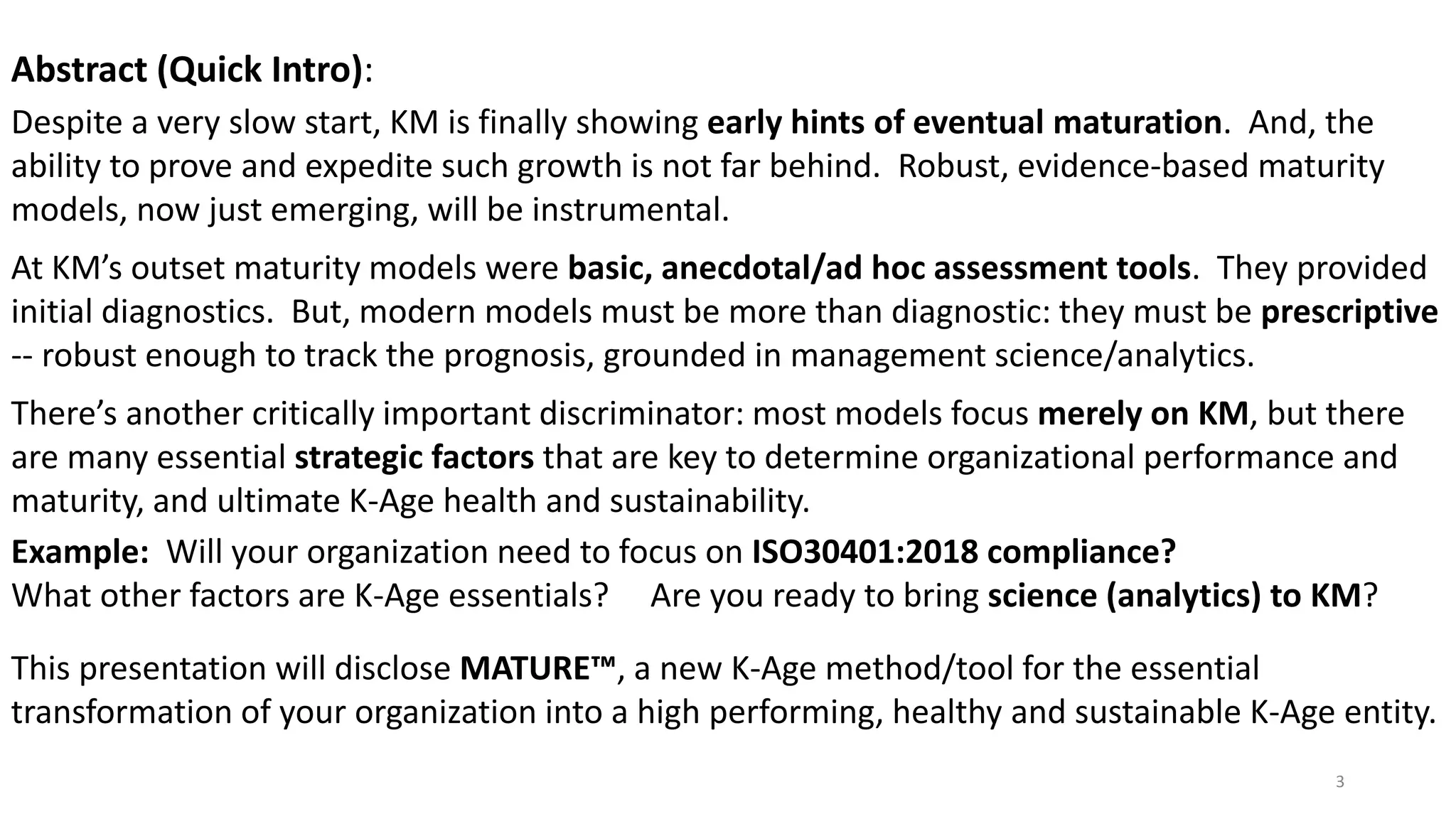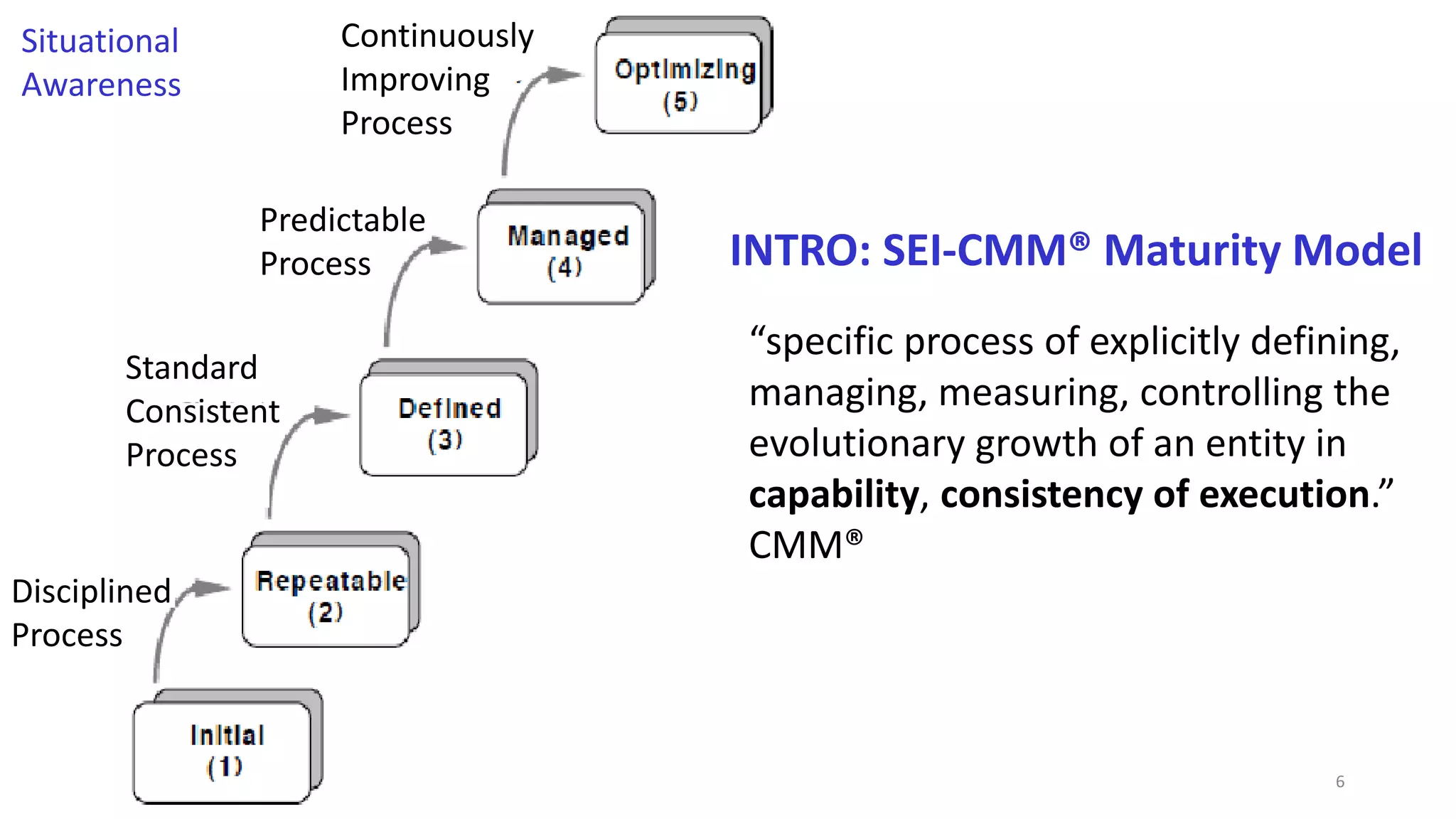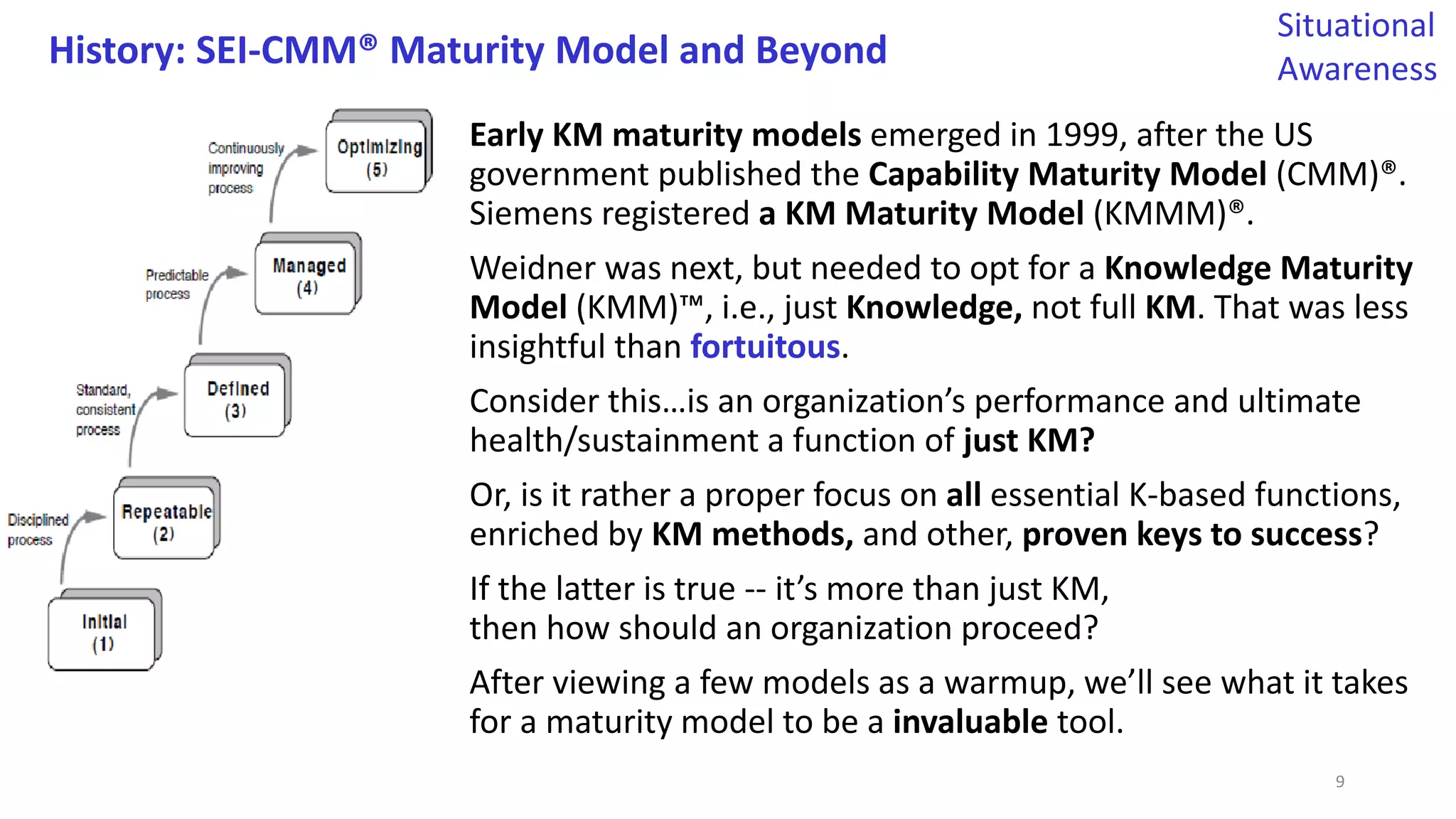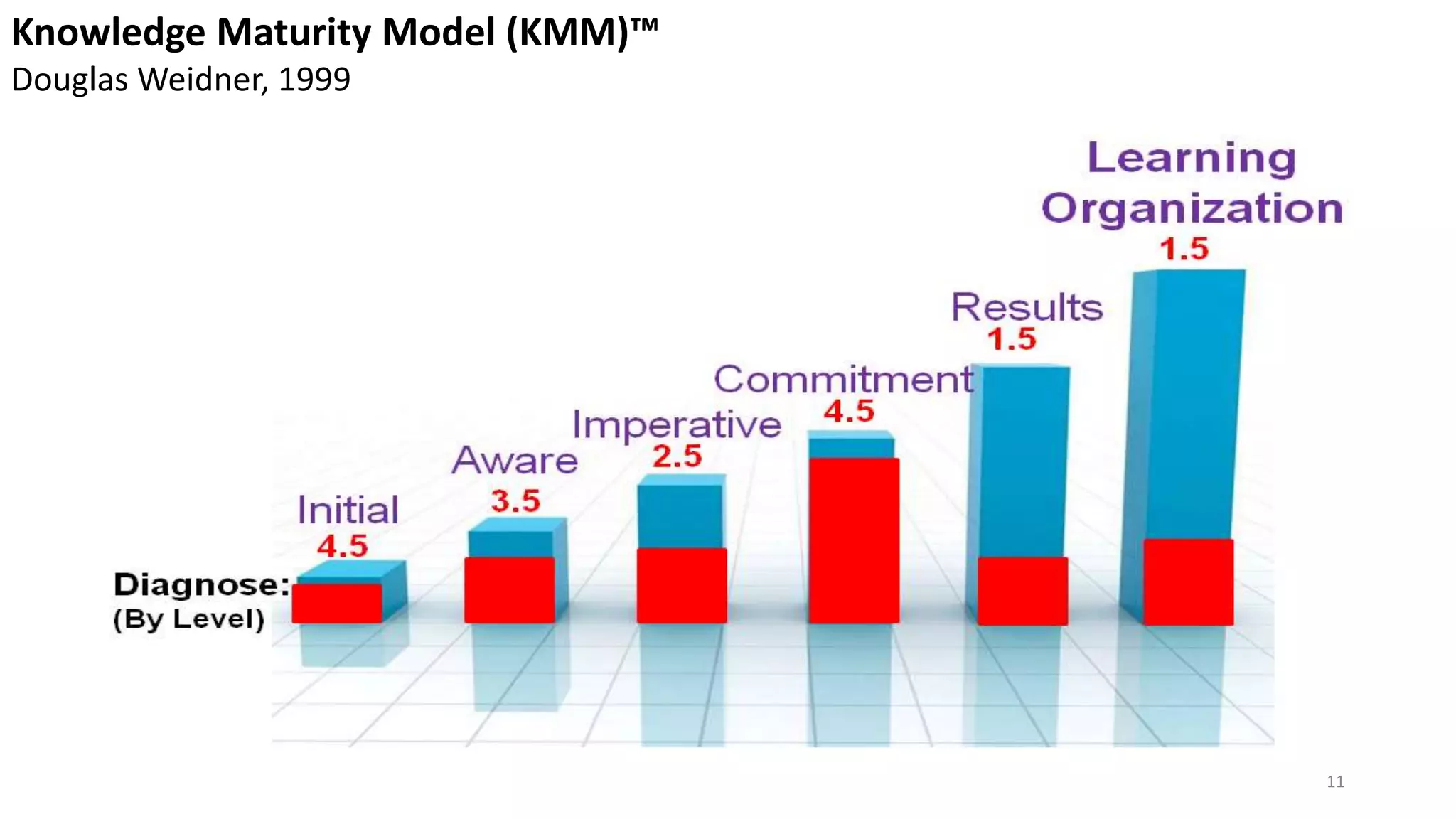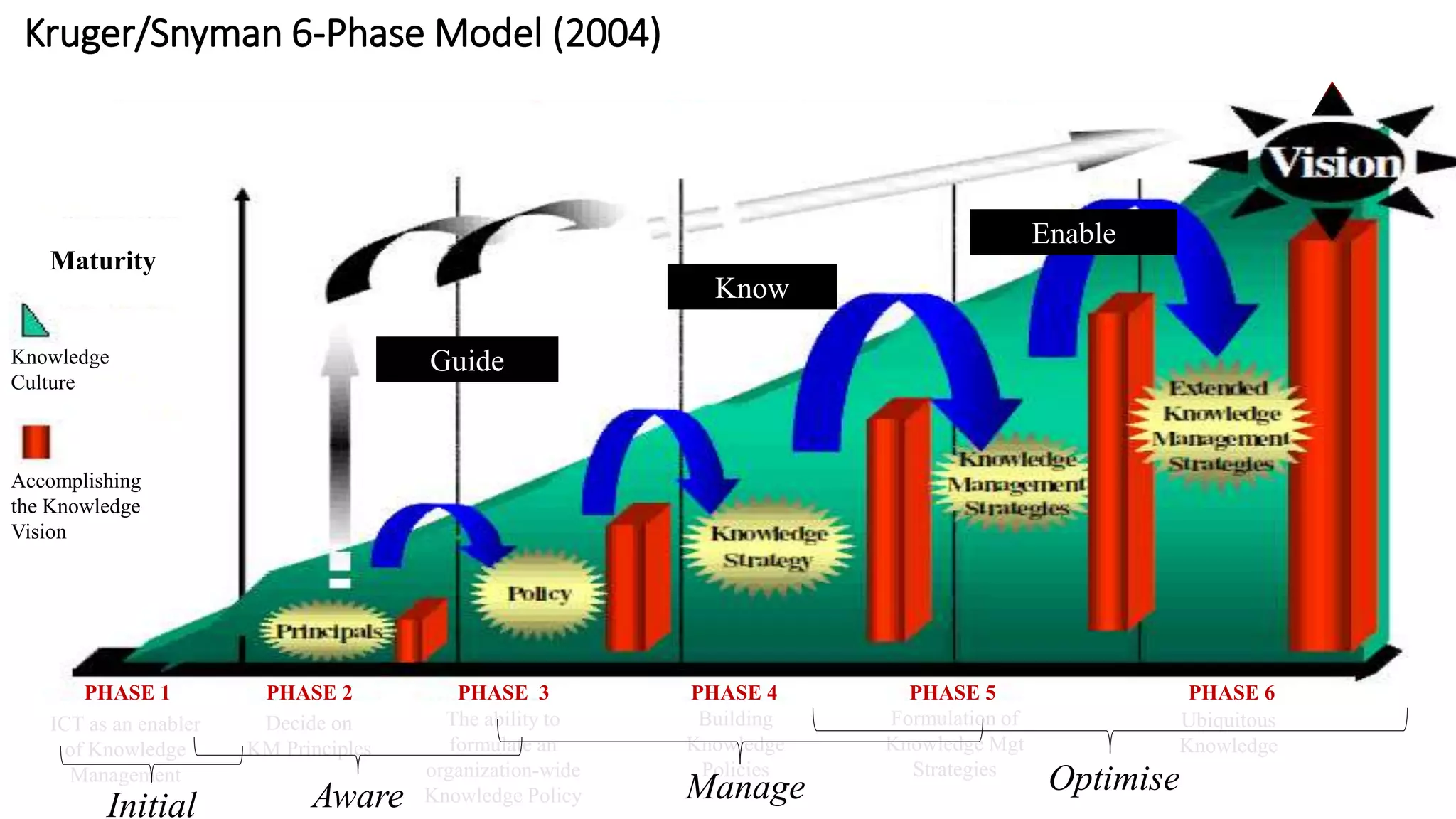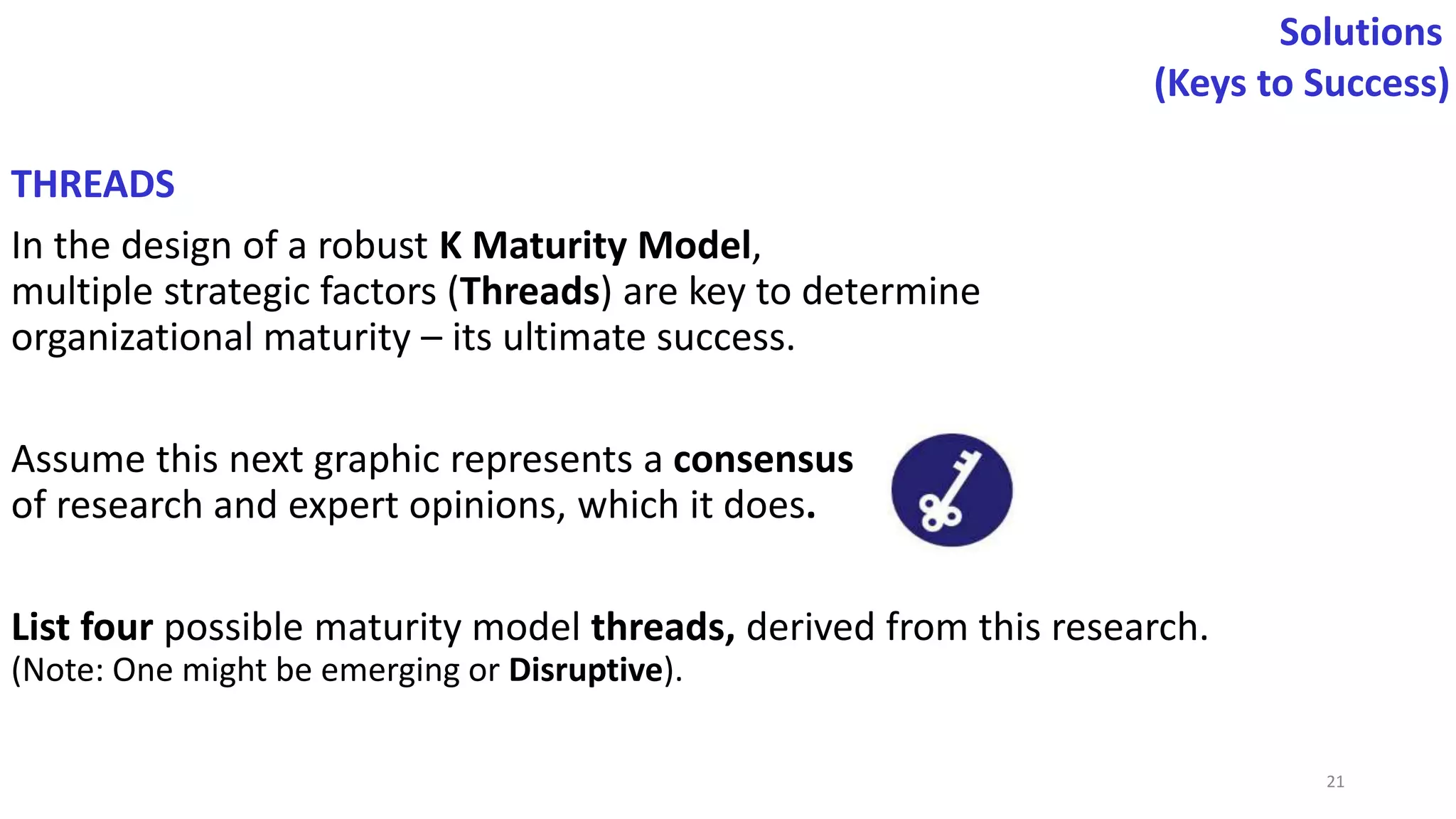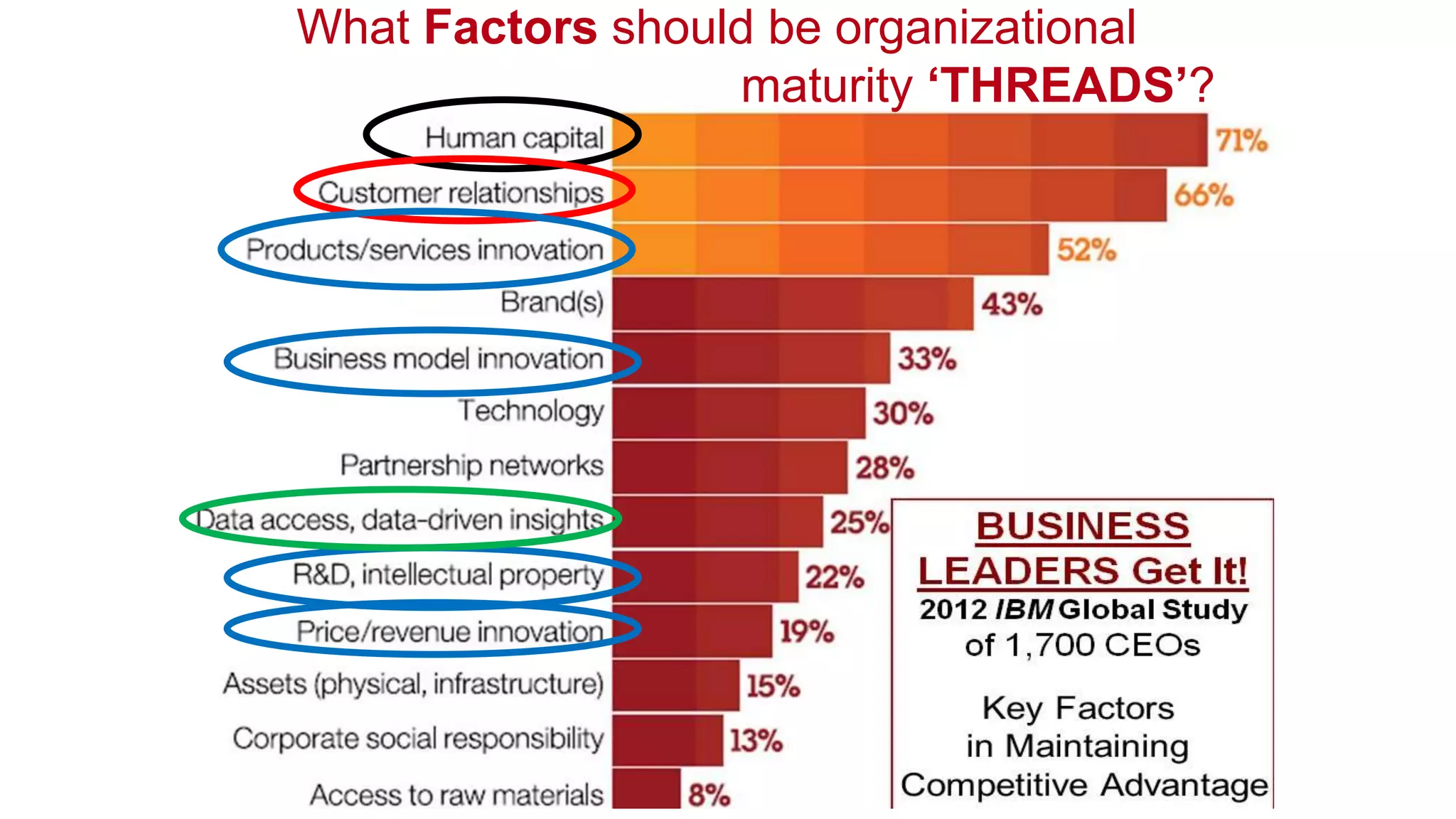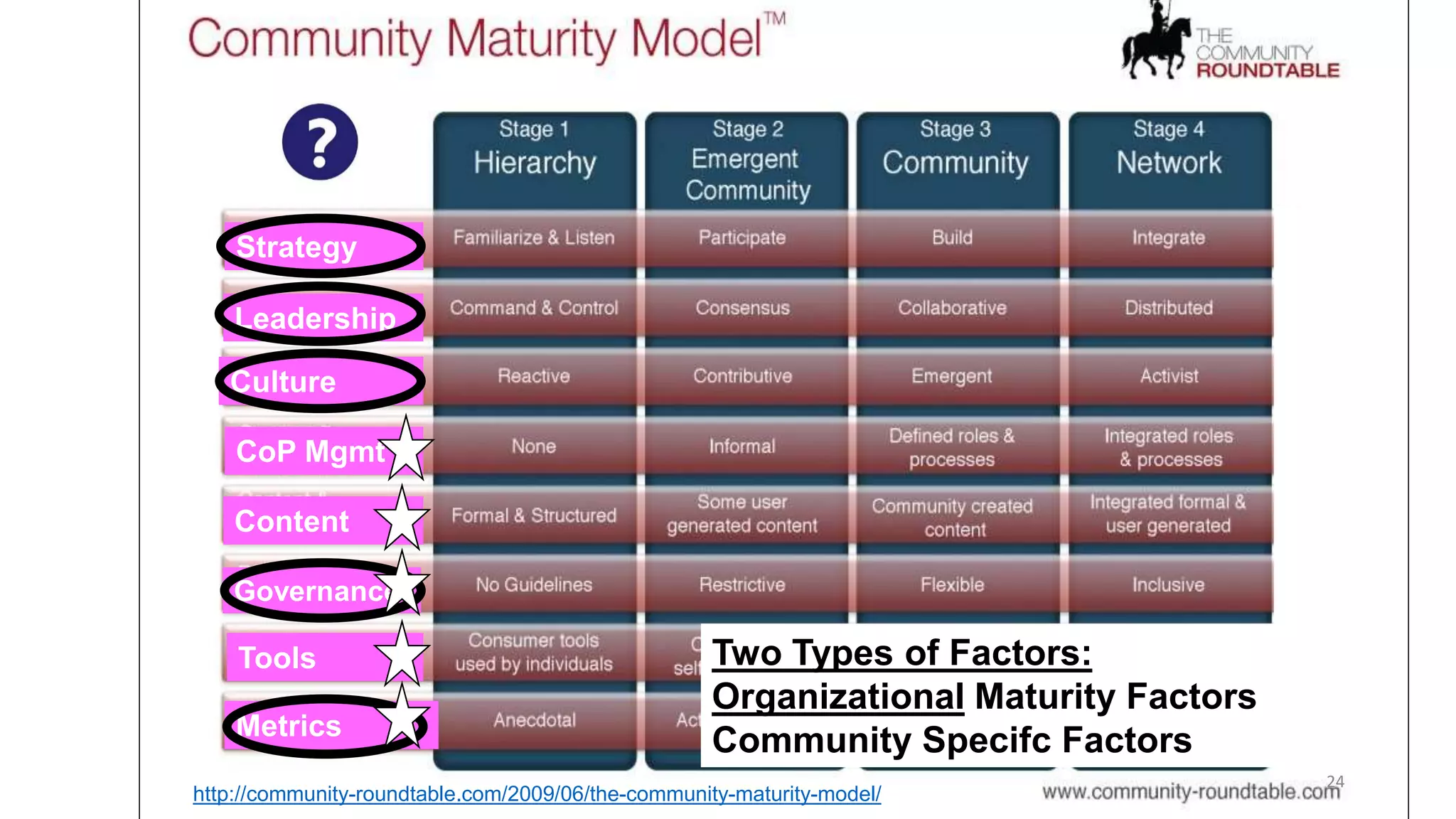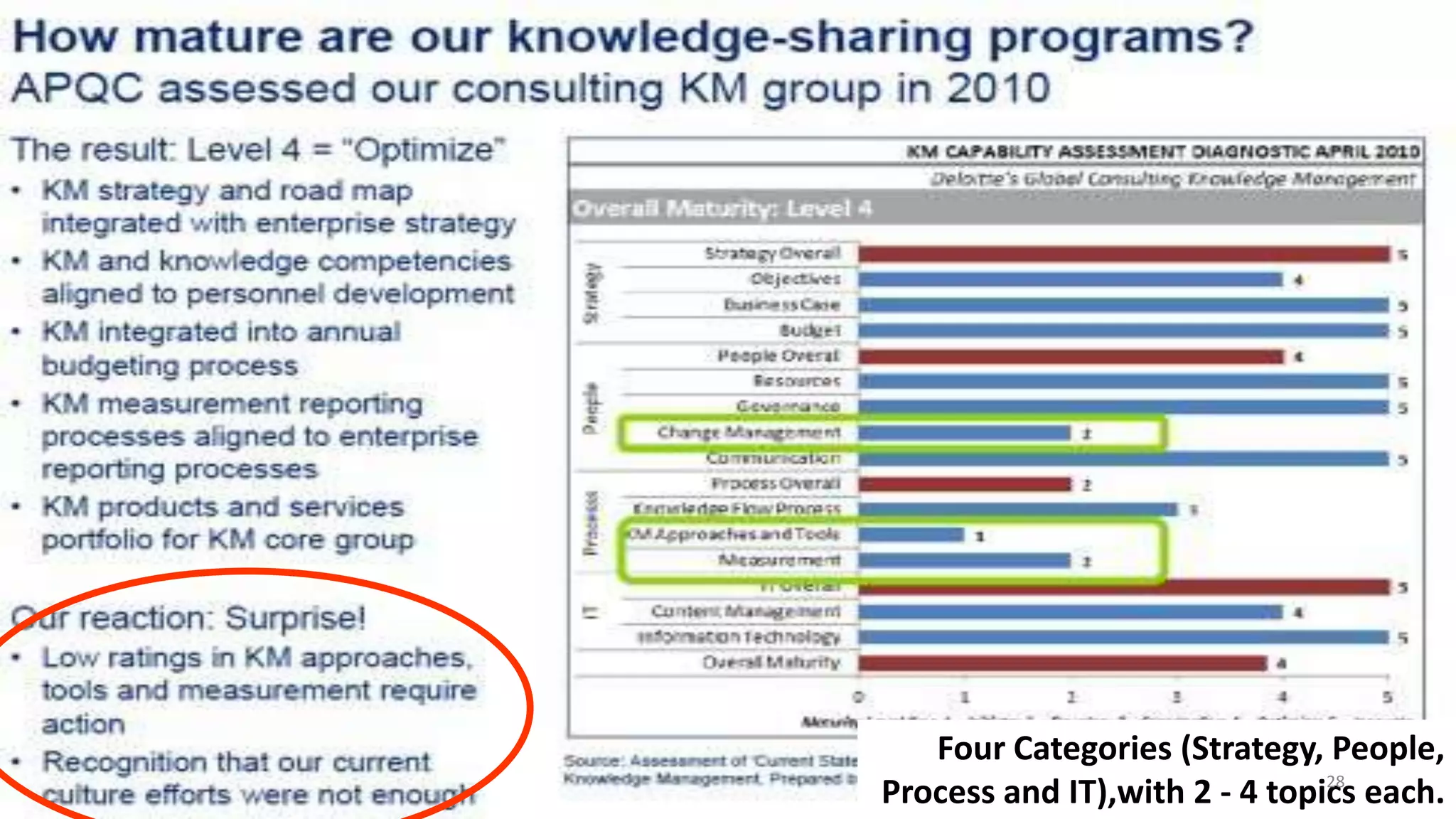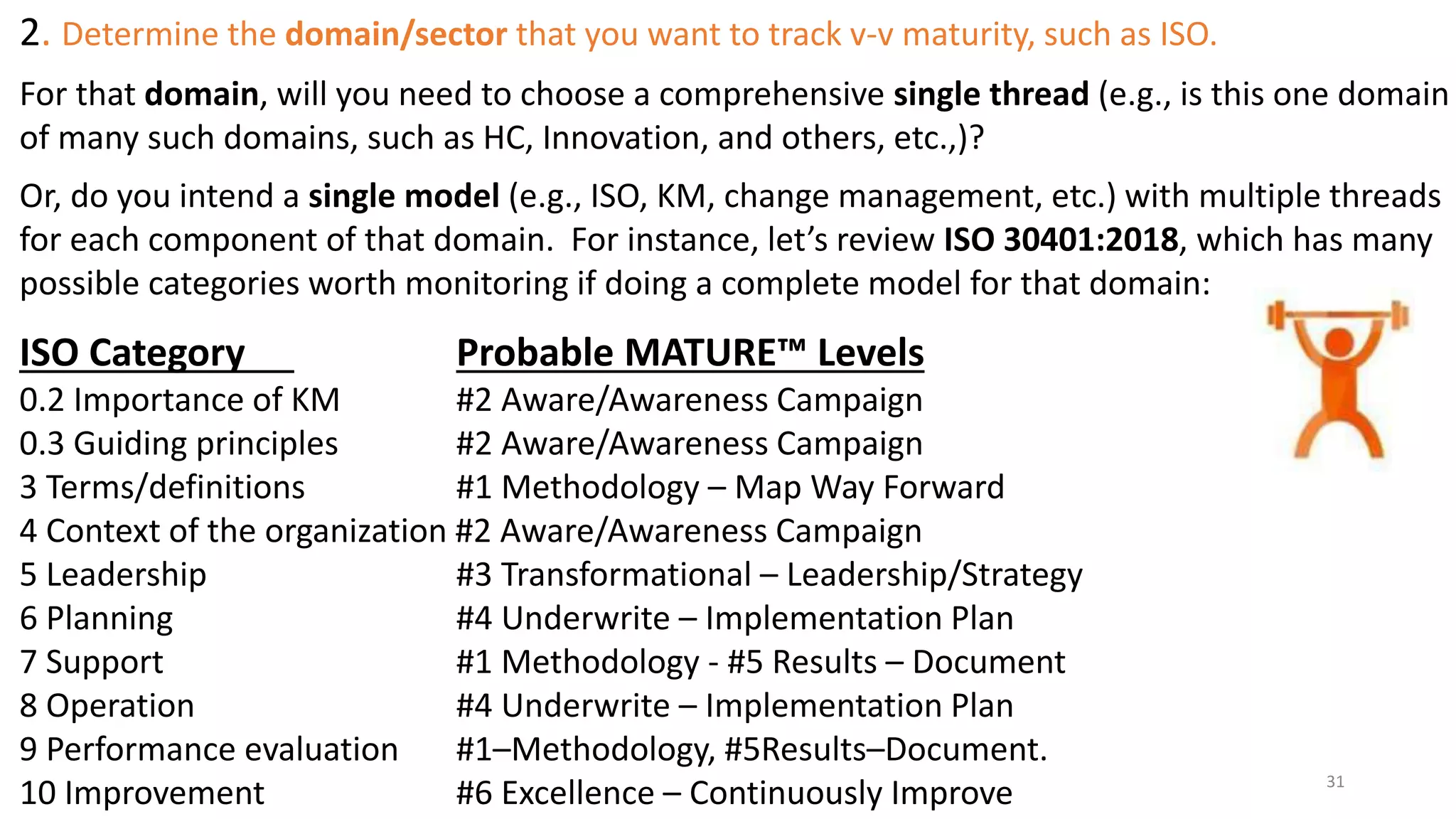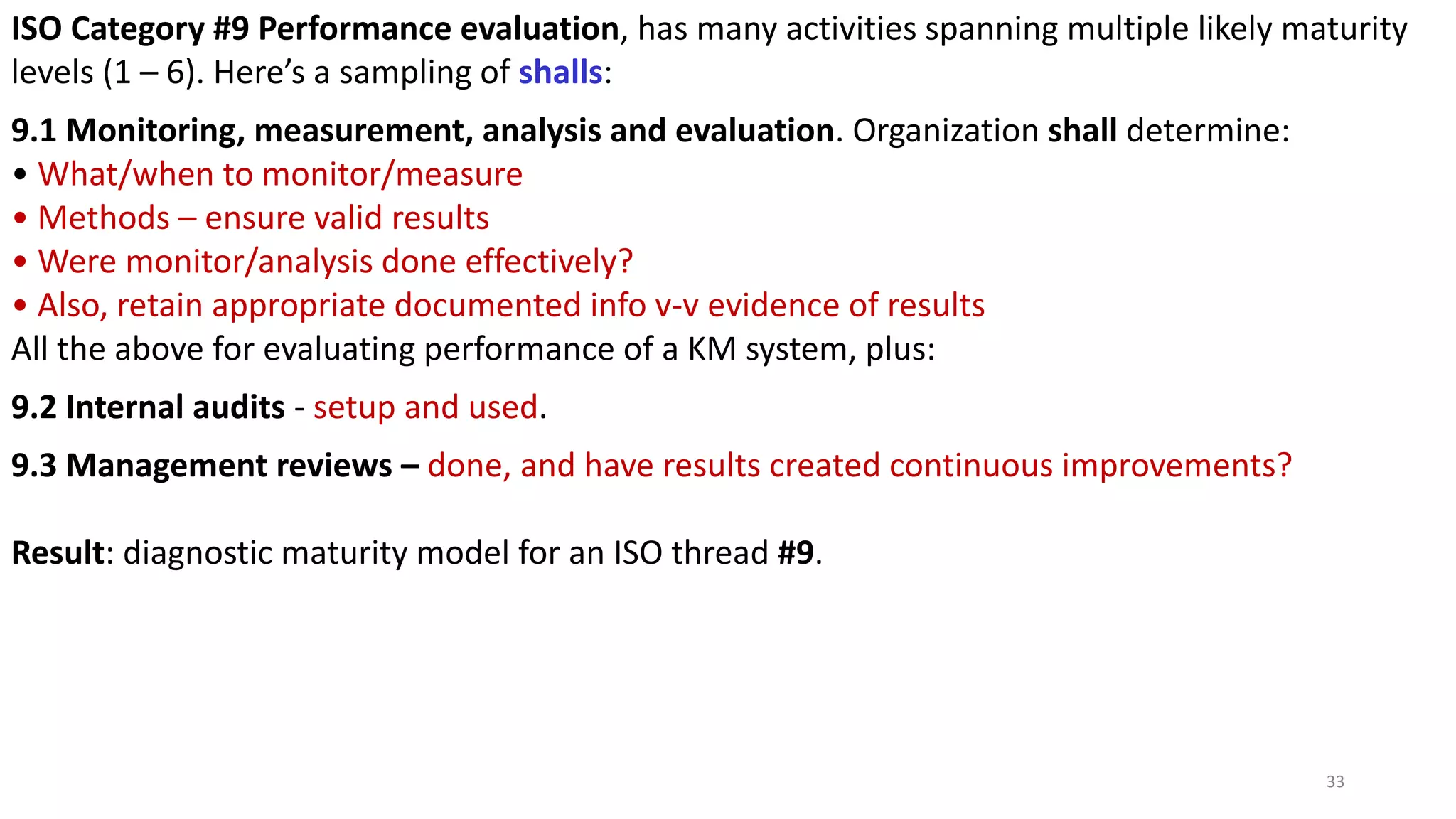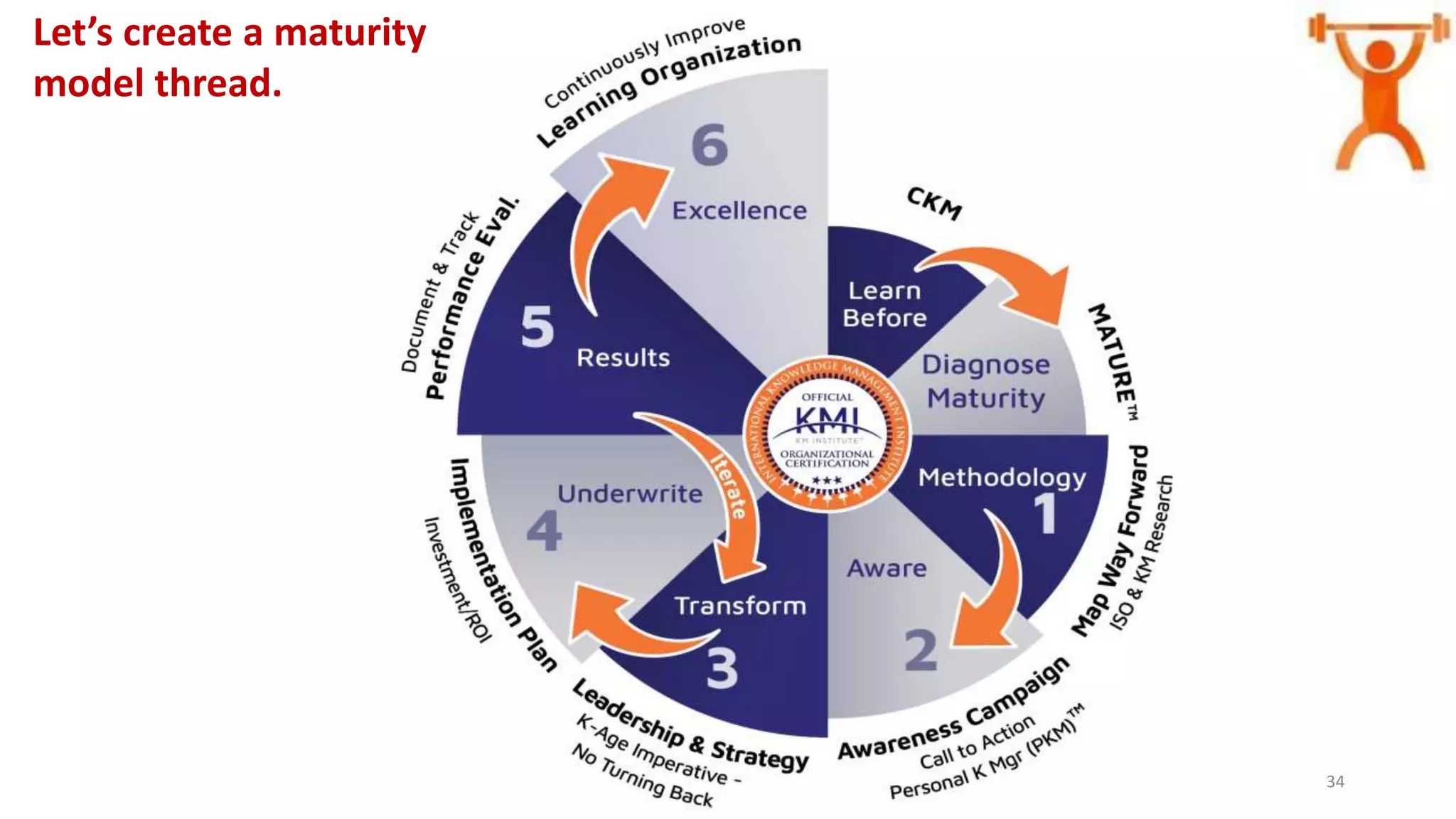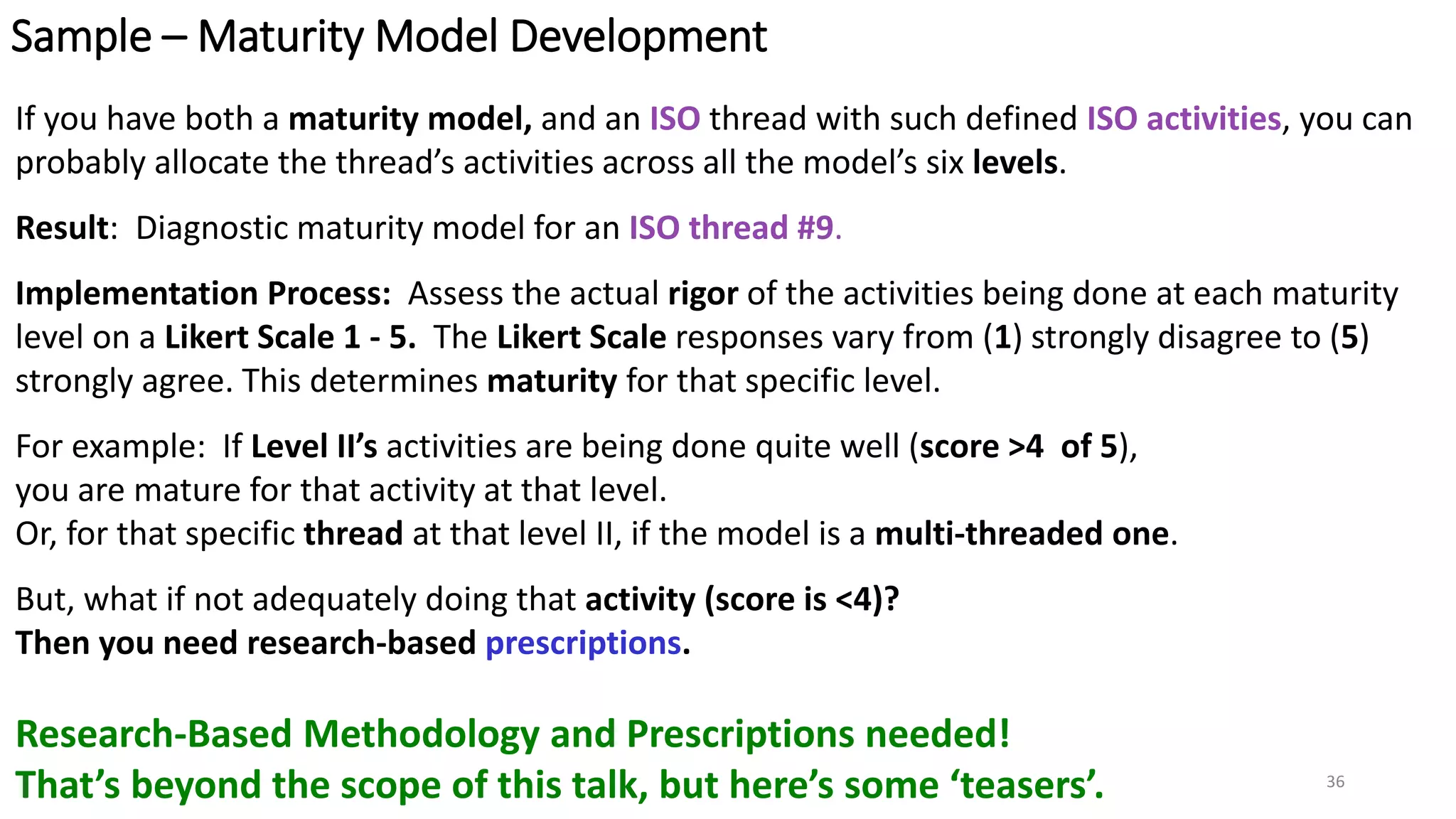This document introduces MATURETM, a new knowledge maturity model. It begins with an abstract noting that while KM models were initially basic, modern models need to be more robust and prescriptive. It then outlines the presentation, which will disclose MATURETM and how it can be used as both an in-house strategic tool and for organizational certifications. The document provides background on early KM maturity models and discusses issues like models being over-simplified and not accounting for the continuous nature of KM implementation. It proposes that the ideal model would include multiple strategic factors beyond just KM, be both diagnostic and prescriptive, and be evidence-based. An exercise is suggested to design threads of such an optimal model


